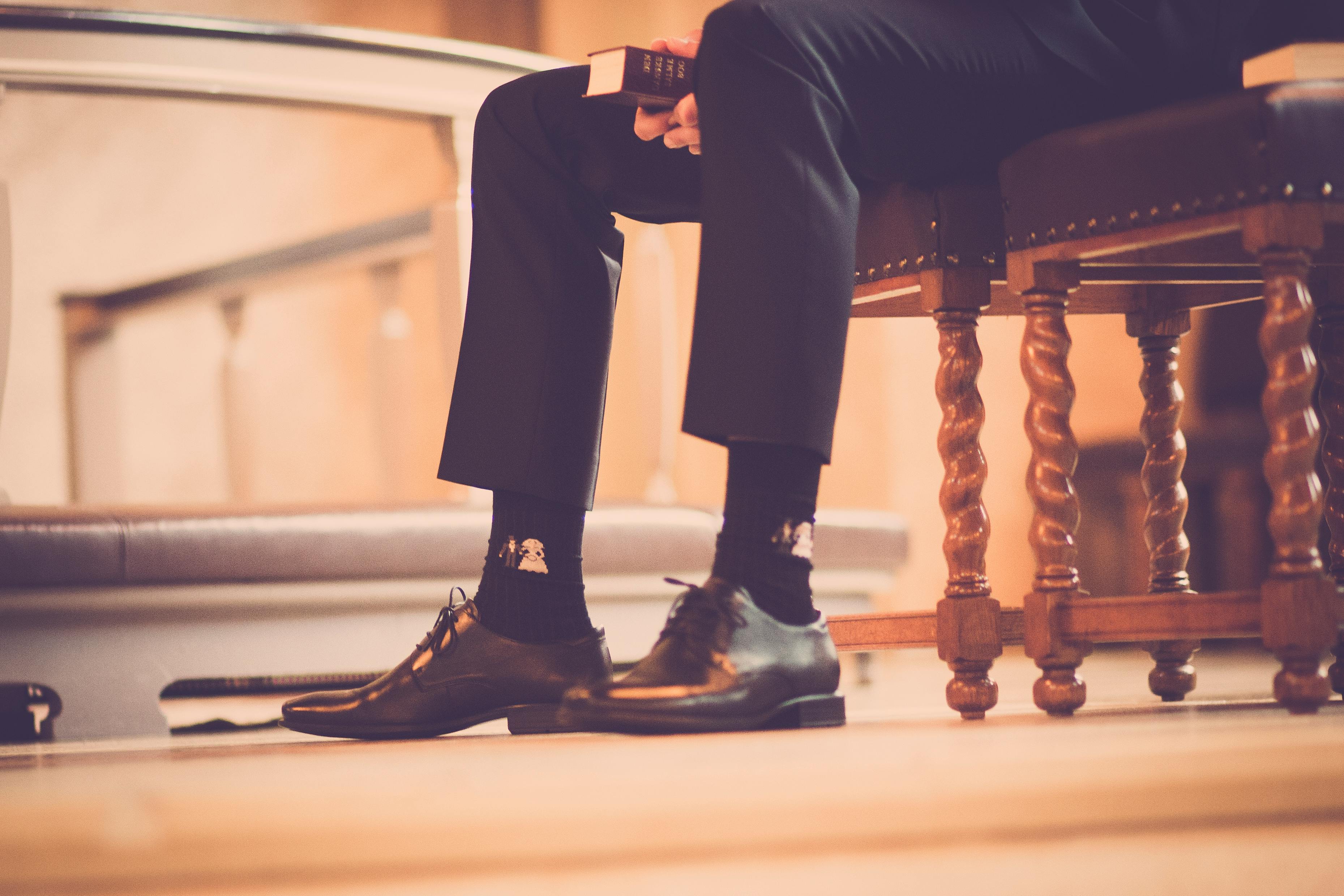How To Wear Soccer Socks And Shin Guards

Soccer is a popular sport that requires you to be well equipped with the right gear. One of the most important pieces of equipment you need are soccer socks and shin guards. Wearing soccer socks and shin guards correctly is important for keeping you comfortable, safe, and agile on the pitch. In this guide, we’ll explain how to wear soccer socks and shin guards properly so you can play your best game.Wearing soccer socks correctly is important for comfort and performance. To wear soccer socks, start by putting the sock on your foot so the heel of the sock is at the back of your heel and the top of the sock is just below your knee. Then, pull up the sock to ensure it fits snugly against your leg. Next, fold down the top of the sock toward your ankle to make sure it will stay in place. Finally, put on a soccer cleat or shoe over the sock. Make sure it fits securely and comfortably before heading out onto the field.
What Size Shin Guards Should I Wear?
Choosing the right size shin guards is an important part of staying safe while playing soccer. It’s essential to choose a pair of shin guards that fit properly, providing protection while also allowing you to move freely and comfortably. The size of shin guards is generally based on the circumference of your calf. Measure your calf at its widest point and use a sizing chart to find the correct size. Make sure that when you try on the shin guards, they fit snugly around your leg without being too tight or loose. You should be able to move freely and comfortably with your shin guards in place, without them slipping down or interfering with your ability to play. It’s also important to make sure that the shin guard is long enough for adequate coverage from knee to ankle. If you’re still unsure about which size is best for you, it can be helpful to consult a knowledgeable retailer who can assist you in finding the perfect fit.
Wearing the right size shin guards will help protect you from painful injuries during play. With a properly fitting pair of shin guards, you can enjoy soccer with peace of mind and confidence in your protection.
Choosing the Right Soccer Socks
Selecting the correct soccer socks is an important part of any soccer player’s uniform. The right pair of socks helps enhance performance and prevent injuries. Soccer socks come in a variety of lengths and styles, so it’s important to choose the right ones for your needs. Here are some tips to help you select the best pair of soccer socks for your game.
When choosing soccer socks, it’s important to consider their length. If you play on turf, then you’ll want to choose a longer sock that will help protect your shin guards from friction with the turf. Longer soccer socks also provide extra support for the ankles and calves, reducing fatigue during games and practices. On the other hand, if you play on natural grass or indoors, then shorter socks are often preferred by players because they allow more freedom of movement around the ankles.
The material of your soccer socks is also an important consideration when selecting them. Generally, synthetic fibers are better suited for performance than cotton because they provide more breathability and moisture-wicking properties. Look for high-quality fabrics that provide comfort and durability. Additionally, try to find a pair of socks with cushioning in key areas like the toes, heels, and ankles as this will help reduce foot fatigue during long matches.
Finally, make sure you choose a pair of soccer socks in a color that matches your team’s uniform colors or individual style preferences. Many teams have officially licensed team-branded merchandise available so you can show off team pride while playing on the pitch!
By taking all these factors into consideration when shopping for soccer socks, you can ensure that you select a pair that fits well and provides maximum comfort and support during intense games and practices. Don’t forget to wash them after each use to keep them fresh and comfortable!
How To Put On Shin Guards
Putting on shin guards correctly is essential for providing the necessary protection for athletes during play. It’s important to ensure the shin guards are placed in the correct position in order to maximize protection and minimize discomfort. Here’s a step-by-step guide on how to put on shin guards correctly:
Step 1: Start by putting on a pair of socks that will fit over the shin guards. For soccer, it’s recommended to wear a pair of long soccer socks, which should be tucked into the guards.
Step 2: Place the shin guard against your lower leg, with the ankle guard at the base of your foot and covering your calf. Make sure that it is positioned correctly and there are no gaps between your skin and the guard.
Step 3: Securely fasten all straps. This will ensure that the guard stays in place during play, and will help protect you from any impact or injury.
Step 4: Put your shoes or cleats on last, as this will help keep everything else in place. Make sure you move around once you have finished putting on your shin guards to make sure they stay secure and comfortable.
With these easy steps, you will be able to put on shin guards properly for maximum protection during play. Remember to always wear protective gear when playing sports as it can help prevent injury and keep you safe while enjoying your favourite sport!
Adjusting Your Shin Guards For Comfort
It is important to make sure that your shin guards are adjusted correctly to ensure maximum protection and comfort when playing sports. It is important to make sure that they fit snugly against your legs and don’t move around when you are playing. Here are some tips on how to adjust your shin guards for optimal comfort.
First, make sure that the shin guards fit snugly against your legs. To do this, you can loosen or tighten the straps on the back of the guard. Make sure that the straps aren’t too tight but not too loose either so that they don’t move around during play.
Second, if your shin guards feel too bulky or uncomfortable, you can adjust them by removing some of the padding from inside the guard. This will help reduce bulkiness and make them more comfortable to wear.
Third, if your shin guards are too long for your legs, you can trim them with a pair of scissors so they fit better. Additionally, if your shin guards feel too tight in certain areas, you can use a pair of pliers to stretch out those areas for more comfort.
Finally, it is important to properly care for your shin guards by cleaning and drying them after each use. This will help keep them in good condition and ensure maximum protection and comfort when playing sports.
By following these tips on how to adjust your shin guards for optimal comfort, you can ensure that they provide maximum protection while still allowing for full range of motion during play. With a little bit of effort and time, you can easily adjust your shins guard so they protect without being overly bulky or uncomfortable

Choosing the Right Fit For Your Shin Guards
When it comes to choosing the right pair of shin guards, it is important to consider the fit. There are several factors to consider when selecting a set of shin guards, including size, material, and construction. It is important to select a pair of shin guards that fit properly in order to maximize protection and comfort. Here are a few tips on how to choose the right fit for your shin guards.
The first step in selecting the right fit for your shin guards is to measure your leg size. This can be done by measuring from your ankle up to your knee with a tape measure. It is important to make sure you measure both legs as they may not be the same size. Once you have your measurements, you can then find the appropriate size for your shin guards.
The next step in finding the right fit for your shin guards is to determine what type of material you would like them made out of. Shin guards come in a variety of materials such as plastic, foam, and even Kevlar or carbon fiber. Depending on what type of sport or activity you will be using them for, different materials may provide better protection from impacts or even provide more comfort during movement.
Finally, it is important to consider how the shin guard is constructed when selecting a pair that fits properly. Many shin guards have adjustable straps that allow you to customize the fit and ensure that it does not move around during play or activity. Additionally, some models have additional padding in key areas such as around the knee and ankle that provide extra cushioning and comfort while playing sports or engaging in physical activities.
Selecting the right pair of shin guards can help ensure maximum protection and comfort while playing sports or engaging in any physical activity. By taking into consideration factors such as size, material, and construction when choosing a set of shin guards, you can ensure that you are getting a pair that fits properly and will provide optimal protection from injuries while playing sports or engaging in other physical activities.
How To Keep Your Shin Guards In Place During Play
Playing soccer or any other sport that requires shin guards can be a challenge. If your shin guards are not properly secured, they can shift and even come off during play. This can not only be uncomfortable, but it can also leave you vulnerable to injury. To make sure your shin guards stay in place during play, here are a few tips to keep in mind.
First and foremost, make sure that the fit of your shin guards is correct. Shin guards should fit snugly against your shins without being too tight or too loose. If they are too loose, they will not stay in place during play and could cause discomfort and potential injury. Additionally, if you are wearing soccer socks or stockings overtop of the shin guards, make sure that they are pulled up high enough to provide additional support for the guard and help keep it from shifting during movement.
Another tip is to use medical tape or bandages to secure the shin guards in place. Wrapping tape or bandages around the shin guard will help them stay secure, especially if you find that your shin guard straps don’t stay tight while playing. However, be careful not to wrap them too tightly as this could also cause discomfort and restrict circulation.
Lastly, certain types of compression sleeves can also be worn overtop of the shin guards to help keep them secure during play. Compression sleeves provide an additional layer of support for your leg and help hold the guard in place better than just straps alone would do. They also provide extra padding which can help protect against impacts from other players or kicks to the ball.
By following these tips on how to keep your shin guards in place during play, you can feel more confident and secure when playing sports like soccer or rugby that require them for protection. With properly fitted and secured shin guards, you will have less worry about them slipping off or causing discomfort so that you can focus on playing your best game!
Wearing The Correct Shoes With Soccer Socks And Shin Guards
Playing soccer requires wearing the correct footwear. Soccer shoes provide the best balance of traction, grip, and support. They are designed to prevent slipping and provide good protection for the feet. Soccer socks should also be worn to protect the feet from friction when playing. Additionally, shin guards should be worn to protect the shins from contact with other players or hard surfaces during a match. Properly fitted soccer socks and shin guards should go over the soccer shoes for maximum protection.
When selecting shoes for playing soccer, it is important to make sure they fit correctly and provide enough support and protection during play. Shoes that are too tight or too loose will not provide adequate support or protection while playing. It is also important that they have sufficient grip on all kinds of surfaces, such as grass, turf, concrete, or asphalt. In addition to providing a secure fit, they should also offer enough cushioning for comfort and shock absorption during play.
In order to ensure proper coverage and protection while playing soccer, it is important to wear the right kind of socks with appropriate length for each foot size. Soccer socks are typically made from cotton or synthetic materials and come in various lengths ranging from low-cut ankle socks to knee-length models. For added comfort and protection against blisters caused by friction between the foot and shoe surface, shin guards should always be worn over them.
It is also important to choose soccer shin guards that fit properly in order to ensure maximum protection while playing. Shin guards come in different sizes depending on age group so it’s important to get one that fits correctly in order for them to provide adequate coverage without slipping down during play. When wearing them with socks, make sure there isn’t too much extra material bunched up around the ankles which can cause discomfort or inhibit movement while running or jumping on the field.
In conclusion, proper footwear along with appropriate fitting soccer socks and shin guards are all essential components of any soccer player’s gear in order to ensure safety and performance while playing this popular sport. By following these simple steps when selecting your equipment you will be well prepared for your next match!

Conclusion
Soccer socks and shin guards are an essential part of the game. They provide the necessary protection to help prevent injury, and also help keep your feet comfortable. When wearing them, make sure they fit snugly and securely. Also, make sure your shin guards are properly placed on your legs so that they cover your shins completely. With a little practice, you can easily learn how to wear soccer socks and shin guards correctly.
In conclusion, wearing soccer socks and shin guards is an important part of playing soccer safely. They protect you from injury while providing comfort and support for your feet. Wearing them correctly is key to enjoying a great game of soccer without any pain or discomfort. With a few simple steps, you can learn how to wear them properly so that you can stay safe while playing the sport you love.
